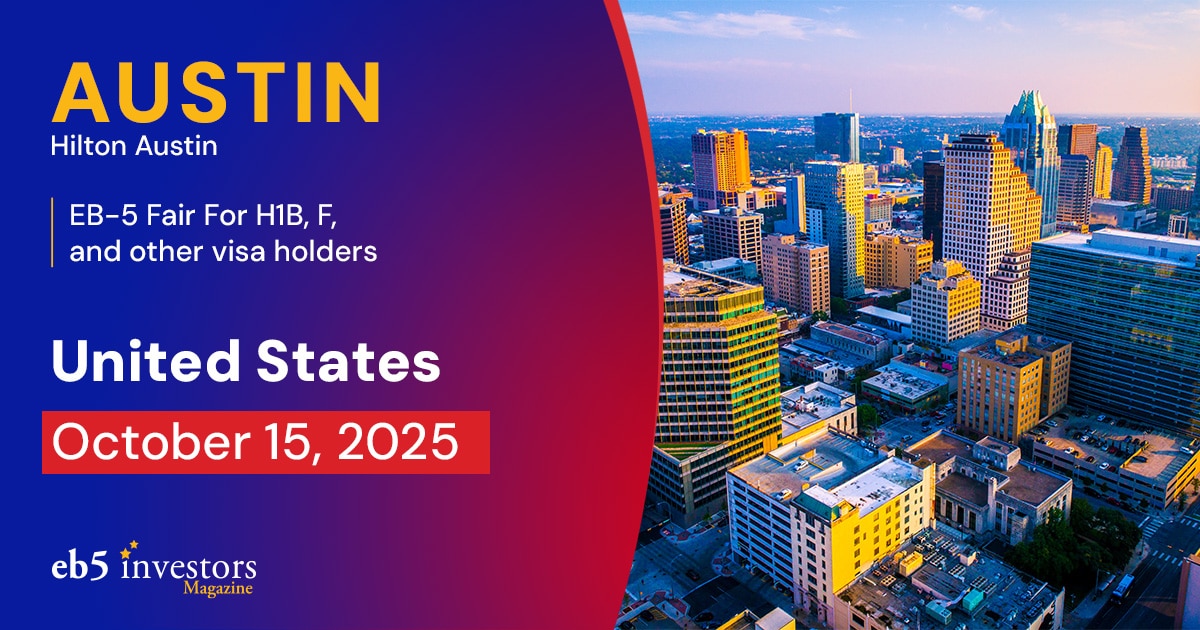(Reviewed July 2025)
How the EB-5 Program Evolved Into a Regulated Pathway to U.S. Residency
Since its creation in 1990 under the Immigration Act (IMMACT90), the EB-5 Immigrant Investor Program has evolved from a niche pathway for foreign investors into a highly regulated and vital component of U.S. immigration policy. Initially designed to boost the U.S. economy through job-creating investments, the program expanded in 1993 with the establishment of Regional Centers to attract more participation. However, scandals and fraud in the 1990s prompted stricter regulations, requiring lawful source of funds and eliminating guarantees of returns. Reforms continued through the 2000s and 2010s with the creation of specialized oversight units within USCIS and centralized processing. The EB-5 Reform and Integrity Act of 2022 marked the program’s most significant overhaul to date, increasing investment thresholds, introducing reserved visa categories, and mandating greater transparency and compliance to protect investors and ensure program integrity. Today, EB-5 remains a key route to U.S. residency for investors, though it operates under far stricter guidelines than in its early years.
EB-5 Visa History
The EB-5 immigrant investment program was created by the United States Congress’ Immigration Act of 1990 (IMMACT90). This act significantly restructured the U.S. immigration system and included changes to non-immigrant visa categories, deportation rules, increased legal immigration limits, among others. Congress established the EB-5 program to stimulate the U.S. economy by giving foreign entrepreneurs who invest in an American commercial enterprise the opportunity to permanently live and work in the United States. In 1992, Congress created the Immigrant Investor Pilot Program which was implemented in 1993 to increase interest in the EB-5 visa program. This new pilot program established EB-5 Regional Centers. Regional Centers are business entities that receive special designation from the United States Citizenship and Immigration Service (USCIS) to administer EB-5 investments and create jobs.
EB-5 Visa Reforms of the 1990s
Several major overhauls to the EB-5 program were made in the late 1990s. These changes were prompted by the discovery of lax regulation enforcement and fraud in EB-5 investments. The ruling in the U.S. District Court case of U.S. v. O’Connor uncovered fraudulent EB-5 investment schemes. The appeals unit of the USCIS, the Administrative Appeals Office (AAO), issued changes to the EB-5 visa requirements in 1998. These changes required investors to provide proof that EB-5 investments originate from lawful sources, proof that investors are personally involved with their EB-5 project, and they prohibited investment return guarantees. The USCIS attempted to apply these new EB-5 visa regulations retroactively to former EB-5 cases. However, the ruling in Chang v. U.S. made this practice illegal. The number of EB-5 applicants significantly dropped after the new regulations were enacted.
There were also four extremely important precedent decisions that were made by the USCIS Administrative Appeals Office during the 1990s. The AAO attempts to ensure that EB-5 regulations are uniformly applied to all new applications. For instance, if an issue that hasn’t been addressed before in an EB-5 application is decided one way, then future applications with that same issue should be similarly addressed. When the AAO makes a decision in an EB-5 application that would affect future applications in this way, those rulings are called precedent decisions. The four important precedent decisions of the 1990s, which are still binding on current EB-5 applications, are Matter of Ho, Matter of Izummi, Matter of Hsiung, and Matter of Soffici. In these decisions, the AAO made important determinations on program requirements including the type of commercial entity that can take EB-5 investment, the qualifications for legal source of funding, and how the investment could be administered.
EB-5 Visa Reforms of the 2000s
Congress passed the Basic Pilot Program Extension and Expansion Act of 2003 to help revitalize the EB-5 program. This Act required the Government Accounting Office (GAO) to conduct a thorough investigation into the EB-5 visa program. This investigation revealed that only a fraction of the 10,000 visas allocated to the EB-5 program were actually being granted each year. This discovery prompted more program reforms. One reform was the creation of the Investor and Regional Center Unit (IRCU) in 2005. This specialty unit of the USCIS has oversight of the EB-5 program that includes case auditing, form design, regulation development, and policy creation. The formation of the IRCU has led to better coordination and increased reliability in the EB-5 program.
Changes in EB-5 Policy 2010s
The USCIS issued revised EB-5 policy guidance in 2009. The USCIS centralized EB-5 processing at the California Service Center (CSC) whereas the processing had previously taken place at two different centers – California and Texas. In spite of not yet being permanent, the EB-5 program has been consistently reauthorized. In 2009, President Obama extended the EB-5 immigrant investor pilot program until September 30, 2012. President Obama reauthorized a three-year extension on September 28, 2012 which will extend the EB-5 Regional Center Pilot Program until 2015.
Developments in the EB-5 industry in 2020s
The EB-5 Reform and Integrity Act of 2022 significantly reshaped the EB-5 industry by introducing new safeguards, stricter compliance requirements, and updated investment thresholds. Enacted on March 15, 2022, the Act reauthorized the EB-5 Regional Center Program through 2027 after it had lapsed in 2021, providing stability and confidence for investors. It raised the minimum investment amount to $800,000 for projects in targeted employment areas (TEAs), such as rural or high-unemployment areas, and $1,050,000 for all other areas. The Act also created new visa set-asides for rural, high-unemployment, and infrastructure projects to encourage investment in underserved regions. Importantly, it mandated more transparency and accountability through regular audits, fund administration requirements, and more oversight of Regional Centers to protect investors from fraud and misuse of funds. The law also introduced concurrent filing, allowing investors already in the U.S. to apply for adjustment of status at the same time as their EB-5 petition, expediting their ability to live and work in the U.S. while waiting for approval.






